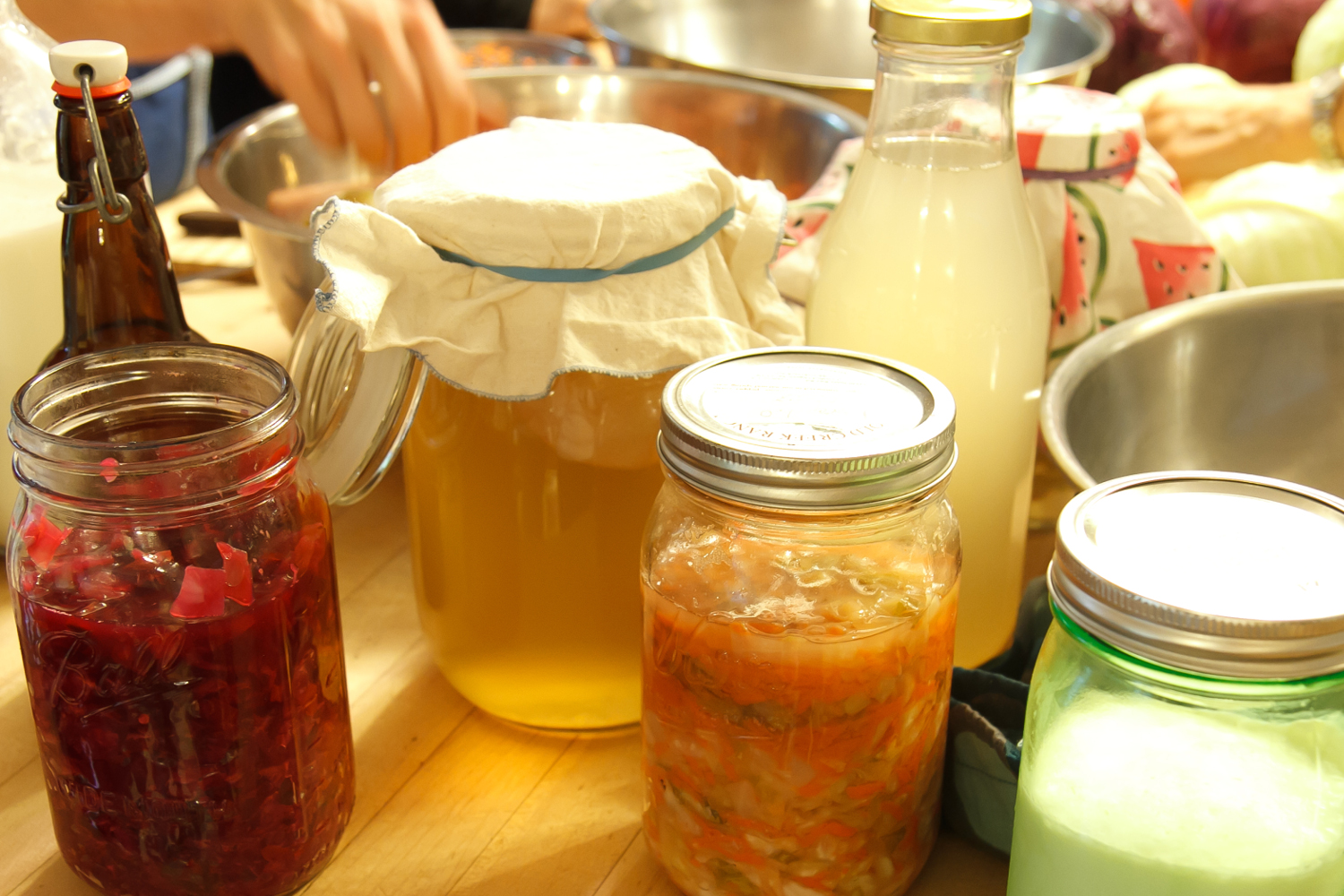Adjusting to a new shopping/cooking/living routine took us a few months. We had to figure out which stores had the best bulk options—and which would allow us to fill up using our own containers. We had to plan ahead more. Gone were the days of running to the store for a plastic tub of sour cream (today we make it but do need 24 hours for it to culture). With our closest farmer’s market running only once a week, we had to get more organized. If we missed it, we’d have to rely on store-bought—and often overpackaged—produce that doesn’t taste nearly as good. We had to figure out replacements for toothpaste, deodorant, shampoo and more.
And actually, those steps were all fairly easy to do where we live. Fun to figure out too. But if you’ve just ventured onto the zero-waste path, all this change can overwhelm you (especially if you have a family that doesn’t share your zeal). To ease into this new lifestyle, start with one or more of these steps:
1. Bring a bag
For a first and painless waste-reducing step in the kitchen, buy or make some simple cloth produce and bulk bags. I make mine out of whatever fabric I have sitting around—old sheets, scraps from other projects, fabric I’ve had for years but still haven’t used. If you do make some, just make sure you use lightweight fabric. You don’t want to pay for the weight of a heavy bag when the cashier weighs your food.
I use at least 10 bags a week. That adds up to 520 plastic bags replaced every year. As a bonus, the cloth produce bags make your food look much more appetizing. Stash them in your reusable shopping bags so you always have them ready to go.
2. Cut the processed snacks
Not ready to cut all processed foods? You can start small. How about eliminating snacks? If you cannot live in a world without Oreos, Goldfish or Nutella, you could try making homemade versions. Search online for a recipe. This is why Google exists—to find recipes for homemade Twinkies. Yes, homemade versions require more work than buying but consider that a silver lining in the junk food cloud—you’ll eat them less often. After all, these are occasional treats not diet staples.
3. Compost
Even if you do save your scraps for broth, make candied orange peels and fry your (organic) potato skins, you’ll still accumulate scraps and bits of food. Compost them. If you don’t have a yard, perhaps a neighbor will let you toss your food scraps onto their compost pile. Community gardens in your area may also accept your food scraps. My boss used to take hers down the street to a community garden before her HOA set up composting for her condo. Several readers have told me they have indoor worm bins.
4. Get a pressure cooker
Although I don’t like to advise people to buy more stuff, consider getting your hands on a pressure cooker IF you’ll use it. (Speaking of pushing stuff, I’ve decided to keep my blog ad-free. The minuscule amount of money I would make is not worth prostituting myself.)
I love, love, love my pressure cooker. If it were a man, I would marry it. It cooks soaked chickpeas in 3 minutes, whole pie pumpkins in 8 minutes and whole beets in 15 minutes. Food also tastes delicious cooked in a pressure cooker. If you go plastic free and zero waste, you’ll cook more from scratch. You may also reduce your meat consumption and eat more beans and legumes. Meat is so difficult to find zero-waste and beans and legumes so easy (at least where I live). A pressure cooker cooks them in no time.
5. Look for second-hand stuff
I have found so many good kitchen wares at our thrift shop, including my beloved pressure cooker. I go regularly and almost always find something. I have found several bale jars, an All-Clad tea kettle, glass bottles, a tablecloth—all sorts of stuff. And I’ve paid pennies on the retail dollar for all of these things, while reducing the need for manufacturing more stuff. I buy clothes, towels, pillow cases and sheets at my thrift shop too. (When I recently told my ex that I buy second-hand sheets and he said “Eww!” I asked him if he has ever stayed in a hotel…) On my birthday last month, I bought a new-to-me pair of jeans that look brand new and fit perfectly. Why did I ever pay retail?
6. Try stuff
I am not a trained chef and that is the point of my blog. Anyone can do what I do. I think most people used to do what I do. If you’ve never fermented sauerkraut for example, you don’t have much to lose in trying—a head of cabbage and some salt. But if it turns out (and it is almost foolproof), you’ll have gained so much: gut-healthy probiotics, a sense of self-sufficiency, a new skill, delicious food. Plus sauerkraut looks pretty as it ferments in its jar on your shelf.
7. Remember: Perfect is not an option
I think people can find the “zero” in “zero waste” intimidating. It sounds so absolute and unforgiving. As my boss likes to say, perfection is the enemy of progress. If you aim for perfection you may feel too paralyzed to start. Better to start and fail miserably than to never try.
If you studied calculus, you’ll remember that you never actually reach the limit of zero, you only approach it. But you may not be ready to do derivatives. You may have forgotten your times tables. Think of this post as the precalculus of zero waste.

